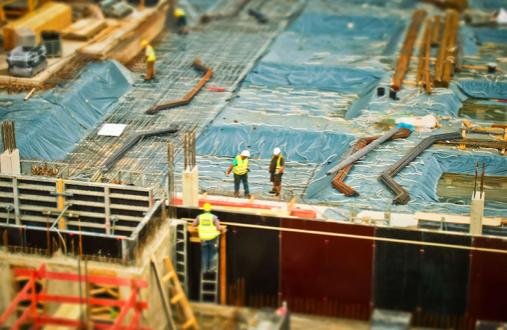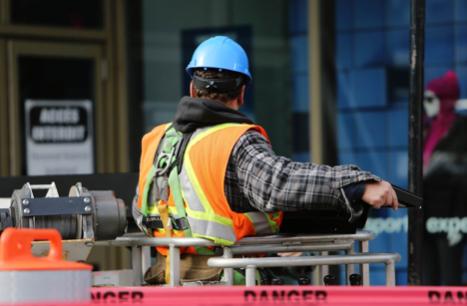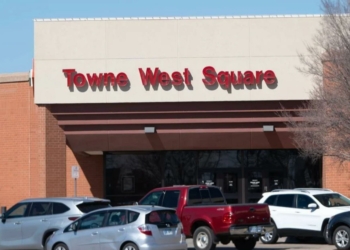Construction risks entail the potential loss through the course of a project. Risks cover multiple facets, including environmental, financial, health, and logistical.
The risks in construction are varied, and much can go wrong when on-site. Below we cover the biggest issues and the actions that lead to them.

Labour Shortage
Australia is in the midst of a labour shortage. Sourcing tradesmen that have experience and are readily available is difficult. The Arcadis 2022 Construction Market View report forecasts a further 100,000 vacancies in the construction industry in 2023.
Contractors may start a project but struggle to find the manpower to finish the job. On government infrastructure jobs, union workers have more bargaining power to strike and demand better pay and conditions.
A shortage is still no excuse to employ unlicensed and untrained labourers to complete skilled tasks. It is currently on the state and federal governments to provide the training and incentives to fill this labour gap.
On the other end of the spectrum is trade stacking.
Trade stacking is multiple contractors attempting to complete work in the same area. It is often the result of poor scheduling but can arise from delays too. A crowded workspace can prolong work as builders may have to work at half capacity to accommodate others around them. A crowded workspace is also a health and safety hazard that can result in collisions and strikes.
Supply Chain Issues
Various natural disasters and global issues have and will continue to disrupt our supply chain nationwide.
Domestically, the price of lumber is volatile. While we source a majority of lumber locally, our supply is at the mercy of disasters such as the 2019-2020 bushfire season. The period known as Black Summer burnt approximately 24 million hectares, including key plantations.
COVID-19 has impacted every market globally in some form. Plants shut down, workers were from the equation as they recovered, and deadlines were delayed.
A stoppage of the workforce isn’t the only factor. When sourcing our materials globally, tariffs, bottlenecks, and political conflict contribute to a dip in supply. The Ukraine war has led to economic sanctions on Russia, which previously exported timber to Australia. The overall effect is a four per cent increase on many worksites.
Other factors are at play but significantly smaller. These include shipping issues, businesses closing, economic downturns, spikes in demand, and inflation.
Many contracts mitigate the risk in construction from price hikes. However, the owner is responsible for monitoring issues that can arise.
Documentation Errors
Complex construction projects require extensive planning and documentation during the planning phase. The greater the job, the more planning required and the larger the risk for errors.
Any document can be riddled with errors that delay timelines and inflate costs:
- Submittals
- Notices
- Pay applications
- Change order
- A form instructing adjustments to be made at a contractor level. Every site experiences a change order, but sites with a poor planning phase will undergo multiple. Multiple orders will delay timelines and increase the cost.
- Drawings
- Incomplete drawings stem from omissions and poorly defined work. The lack of clarity is what leads to change orders.
- Contract documents
- Adequate contracts protect stakeholders on both sides from excessive risk. Companies only invite legal disputes over damages if these protections aren’t in place.
- Lien Waivers
- The commercial building equivalent of a receipt. The waiver proves a product or service is being supplied in exchange for payment and limits the lien liability. No lien waiver indicates a failure of due diligence and means parties are at risk. It is a problem in small residential sites where builders may take the money and run with no waiver due to the job’s modest size.
Health and Safety Hazards

Construction remains a dangerous industry in Australia, accounting for approximately 15 per cent of workplace fatalities. In 2021 alone, there were 24 fatalities on-site.
The biggest safety risks in construction can fit into four classes:
- Falls;
- Caught or in-between;
- Electrocution; and
- Struck by.
Safety is a constant concern for general contractors and business owners. Failure to abide by or take preventive action will result in fines or compensation through worker insurance. WorkSafe can fine companies on the spot in amounts up to $1,817.40.
A serious breach can see worksites shut down with a stop work order until appropriate safety measures are met. A stop-work order is also applicable in the event of payment issues.
The easiest safety measures for a construction site are to train, control, and supply protective equipment (PPE) to prevent or mitigate accidents.
Building & Contractors Defaulting
Slow payment processing can seriously impact cash flow and raise the risk of default for building companies. Disputes may arise from change orders, work quality disputes, financing delays, or more.
The risk of default only increases on large-scale commercial projects with multiple contractors. A default can greatly delay or derail the entire job site.
COVID greatly impacted the construction industry. Many corporations had no option but to reduce output or halt entirely depending on the state.
Those worries haven’t subsided, either. 2022 saw Metricon Homes battle accusations that the housing giant was in financial trouble after a significant restructuring. In March 2023, PBS collapsed, with workers spotted packing up sites across the country after an abysmal financial year.
New Stakeholders
Construction risks changeovers of stakeholders due to their long-term nature. No better example can be found in Australia than the East-West Link.

A pet project of the provisional state government, hundreds of millions of dollars, and an anti-protest law for the opposing parties pushed forward. The project met significant backlash despite the attempt to bulldoze through approvals.
Opposition leader Daniel Andrews led the charge with an election promise to cancel the project, which he did when he won the state election in 2014. The compensation costs for the cancellation were over a billion dollars.
In Summary
Multiple examples of cutting corners and poor planning have shown construction projects blowing up in the faces of contractors. Ultimately, careful planning, quality safety measures, equipment, and due diligence remain the cost-effective solution for a commercial site.




















